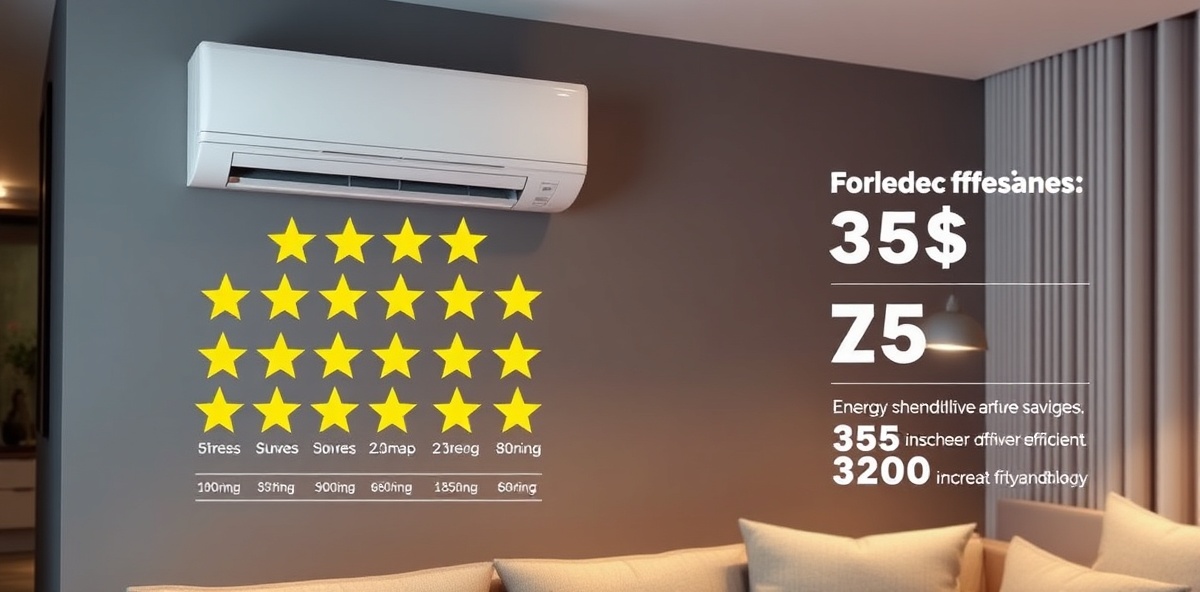
Compare 5-star vs 3-star AC electricity consumption with real examples. Learn which AC saves more money and use our free AC Bill Calculator to check your savings.
Star ratings directly impact your monthly electricity bill, but is a 5-star AC worth the higher upfront cost compared to a 3-star AC? With electricity prices rising across India, choosing the right AC can save you thousands of rupees every year. Use our comprehensive AC unit cost calculator to compare running costs by AC rating for your specific needs.
Quick Answer: A 5-star AC typically consumes 20-30% less electricity than a 3-star AC, translating to annual savings of ₹15,000-25,000 for heavy users. Check your potential savings with our electricity bill calculator.
The Bureau of Energy Efficiency (BEE) rates ACs on a 1-5 star scale based on their Energy Efficiency Ratio (EER). Higher stars mean lower electricity consumption for the same cooling output. Learn more about star rating standards at the official BEE Star Label Program website.
A 5-star AC uses advanced inverter technology that adjusts compressor speed based on cooling needs, while 3-star ACs typically use older, less efficient technology. Calculate the exact power consumption difference using our AC power consumption calculator.
Energy Efficiency Comparison:
Understanding the real-world electricity consumption difference helps you make informed decisions. Use our AC electricity cost calculator for detailed usage and cost insights based on your specific AC model and usage patterns.
| AC Type | Power Consumption | Usage (8 hrs/day) | Monthly Cost |
|---|---|---|---|
1.5 Ton 3-Star AC | 1.5 kW | 12 kWh | ₹2,880 |
1.5 Ton 5-Star AC | 1.0 kW | 8 kWh | ₹1,920 |
Power: 1.5 kW × 8 hours = 12 kWh/day
Cost: 12 kWh × ₹8/unit = ₹96/day
Monthly: ₹96 × 30 days = ₹2,880
Annual: ₹2,880 × 12 months = ₹34,560
Power: 1.0 kW × 8 hours = 8 kWh/day
Cost: 8 kWh × ₹8/unit = ₹64/day
Monthly: ₹64 × 30 days = ₹1,920
Annual: ₹1,920 × 12 months = ₹23,040
By choosing a 5-star AC over a 3-star AC (at ₹8/unit tariff)
Total electricity cost savings over 5 years with a 5-star AC
5-star ACs typically have lower maintenance costs due to better build quality and inverter technology.
Higher star-rated ACs often last longer (12-15 years vs 8-10 years for lower-rated models).
Better temperature control, quieter operation, and faster cooling with inverter technology.
Use our free AC Bill Calculator to compare different star ratings based on your specific usage, tonnage, and local electricity tariff rates.
If you use AC only 2-3 hours per day or during short summers
Lower upfront cost can be justified if immediate budget is limited
For rental properties or temporary installations
If you use AC less than 4 hours daily, the electricity savings from a 5-star AC may not justify the higher purchase price within the first 3-4 years.
For most Indian households, a 5-star AC pays for itself within 2-3 years through electricity savings. Understanding your AC bill helps you make smarter choices and save money every month.
A 5-star AC typically consumes 20-30% less electricity than a 3-star AC. For example, a 1.5-ton 5-star AC consumes about 8 kWh daily (8 hours usage) compared to 12 kWh for a 3-star AC, resulting in savings of ₹32 per day at ₹8/unit tariff.
Yes, for most users. A 5-star AC typically pays for itself within 2-3 years through electricity savings. Over 5 years, you can save approximately ₹57,600 in electricity costs compared to a 3-star AC, assuming 8 hours daily usage.
The annual electricity cost difference is approximately ₹11,520. A 3-star AC costs about ₹34,560 per year while a 5-star AC costs about ₹23,040 per year (based on 8 hours daily usage at ₹8/unit tariff).
Choose a 3-star AC if you use it less than 4 hours daily, have budget constraints, live in areas with short summers, or need a temporary installation. For heavy usage (6+ hours daily), a 5-star AC is always more economical.
Learn how AC tonnage affects your electricity bill and find the right size for your room.
Read More →Complete guide to understanding star rating benefits and monthly electricity savings.
Read More →Discover the optimal AC temperature settings for maximum energy savings.
Read More →